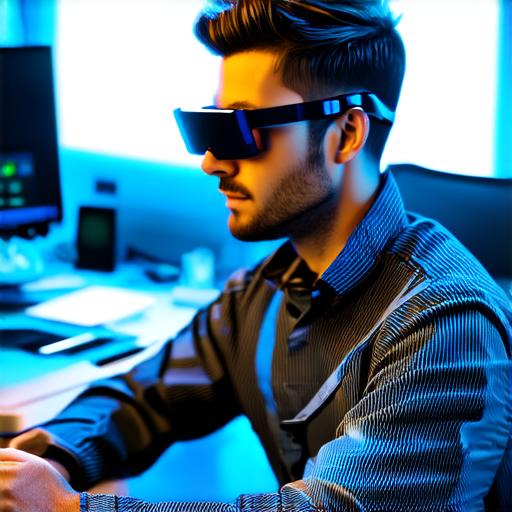Introduction
Augmented reality (AR) is a technology that superimposes digital information onto the real world. One of the most popular ways to experience AR is through AR glasses, which allow users to see additional data and graphics overlaid onto their field of vision.
What are Augmented Reality Glasses?
Augmented reality glasses are a type of wearable technology that combines AR with the form factor of eyeglasses. These glasses typically consist of a pair of lenses with sensors and cameras embedded into them. The sensors and cameras detect the user’s surroundings and use this information to overlay digital content onto the real world.
The most well-known example of augmented reality glasses is Google Glass, which was released in 2013 as an experimental product. However, since then, many companies have developed their own AR glasses for various applications, such as gaming, education, and healthcare.
How do Augmented Reality Glasses Work?
The process of creating an augmented reality experience through glasses involves several steps:
- Capture the real world: The first step is to capture a 3D representation of the user’s surroundings using sensors such as depth cameras and infrared sensors. This data is then used to create a digital model of the environment.
- Overlay digital content: Once the digital model of the environment is created, the next step is to overlay digital content onto this model. This content can include graphics, animations, or other forms of interactive media.
- Display the information: Finally, the data is displayed through a pair of glasses that project the digital content onto the user’s field of vision. The glasses typically use a combination of displays and optical lenses to create an immersive experience.
Use Cases for Augmented Reality Glasses
Augmented reality glasses have many potential applications across various industries. Here are a few examples:
- Gaming: AR glasses can be used to create immersive gaming experiences, allowing players to interact with virtual environments in real-time. This technology has already been used to create popular games such as Pokemon Go and Ingress.
- Education: AR glasses can be used to enhance the learning experience by overlaying digital content onto the physical world. For example, a biology teacher could use AR glasses to show students the anatomy of a plant or animal in 3D.
- Healthcare: AR glasses have been used to improve patient outcomes in healthcare settings. For example, surgeons can use AR glasses to visualize a patient’s internal organs during surgery, allowing for more precise and accurate procedures.
- Retail: AR glasses can be used by retailers to provide customers with personalized shopping experiences. For example, a clothing retailer could use AR glasses to allow customers to try on virtual outfits before making a purchase decision.

FAQs
1. Can I use augmented reality glasses if I have a vision problem?
Yes, AR glasses are designed to be used by people with normal or corrected-to-normal vision. However, it’s always a good idea to consult with an eye doctor before using AR glasses to ensure that they are safe and appropriate for your needs.
2. How do I adjust the settings on my AR glasses?
Most AR glasses come with a smartphone app or web interface that allows you to adjust the settings. For example, you can change the brightness and contrast of the digital content or customize the way it’s displayed.
3. Are augmented reality glasses dangerous?
There have been some concerns about the potential dangers of AR glasses, such as eye strain and discomfort. However, these risks are generally minor and can be mitigated with proper use and care.
Conclusion
Augmented reality glasses are a fascinating technology that has the potential to revolutionize the way we interact with the world around us. Whether you’re a gamer, educator, healthcare professional, or retailer, AR glasses offer a unique way to enhance your experience of the physical world. As this technology continues to evolve and improve, we can expect to see even more innovative applications in the future.
